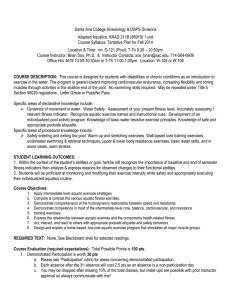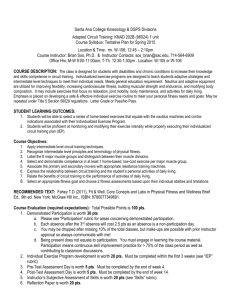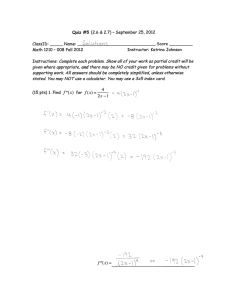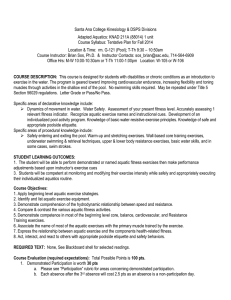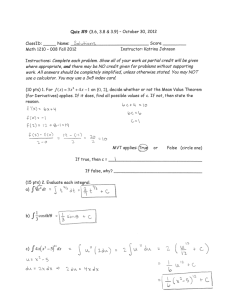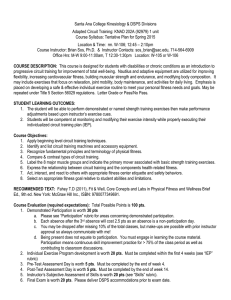Santa Ana College Kinesiology & DSPS Divisions
advertisement
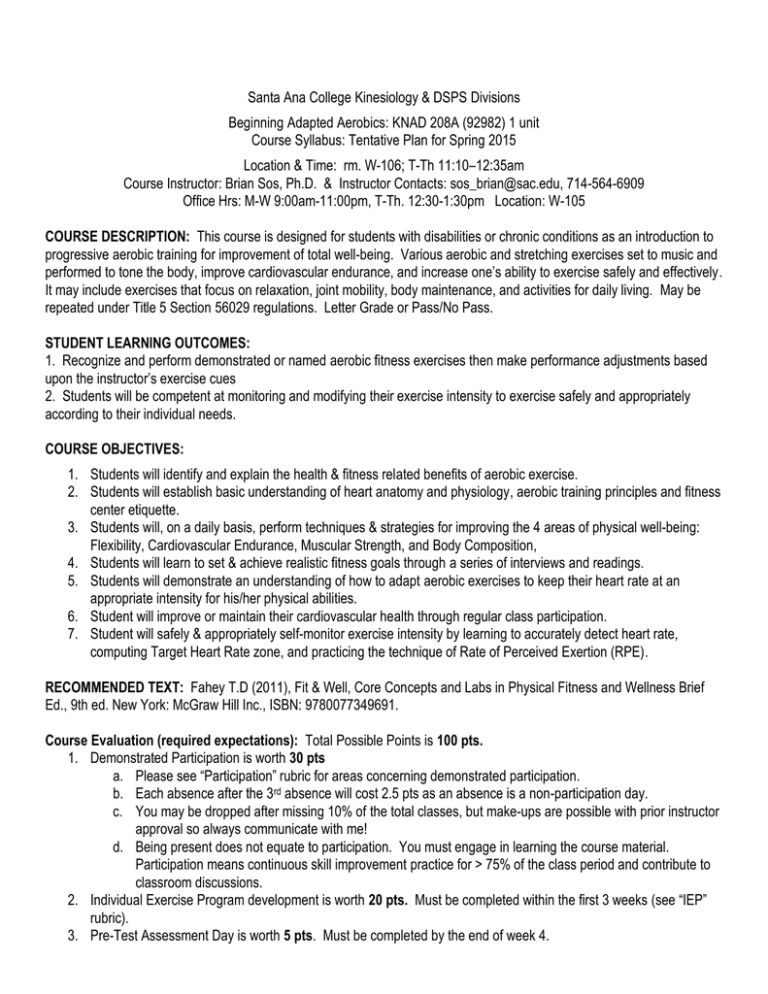
Santa Ana College Kinesiology & DSPS Divisions Beginning Adapted Aerobics: KNAD 208A (92982) 1 unit Course Syllabus: Tentative Plan for Spring 2015 Location & Time: rm. W-106; T-Th 11:10–12:35am Course Instructor: Brian Sos, Ph.D. & Instructor Contacts: sos_brian@sac.edu, 714-564-6909 Office Hrs: M-W 9:00am-11:00pm, T-Th. 12:30-1:30pm Location: W-105 COURSE DESCRIPTION: This course is designed for students with disabilities or chronic conditions as an introduction to progressive aerobic training for improvement of total well-being. Various aerobic and stretching exercises set to music and performed to tone the body, improve cardiovascular endurance, and increase one’s ability to exercise safely and effectively. It may include exercises that focus on relaxation, joint mobility, body maintenance, and activities for daily living. May be repeated under Title 5 Section 56029 regulations. Letter Grade or Pass/No Pass. STUDENT LEARNING OUTCOMES: 1. Recognize and perform demonstrated or named aerobic fitness exercises then make performance adjustments based upon the instructor’s exercise cues 2. Students will be competent at monitoring and modifying their exercise intensity to exercise safely and appropriately according to their individual needs. COURSE OBJECTIVES: 1. Students will identify and explain the health & fitness related benefits of aerobic exercise. 2. Students will establish basic understanding of heart anatomy and physiology, aerobic training principles and fitness center etiquette. 3. Students will, on a daily basis, perform techniques & strategies for improving the 4 areas of physical well-being: Flexibility, Cardiovascular Endurance, Muscular Strength, and Body Composition, 4. Students will learn to set & achieve realistic fitness goals through a series of interviews and readings. 5. Students will demonstrate an understanding of how to adapt aerobic exercises to keep their heart rate at an appropriate intensity for his/her physical abilities. 6. Student will improve or maintain their cardiovascular health through regular class participation. 7. Student will safely & appropriately self-monitor exercise intensity by learning to accurately detect heart rate, computing Target Heart Rate zone, and practicing the technique of Rate of Perceived Exertion (RPE). RECOMMENDED TEXT: Fahey T.D (2011), Fit & Well, Core Concepts and Labs in Physical Fitness and Wellness Brief Ed., 9th ed. New York: McGraw Hill Inc., ISBN: 9780077349691. Course Evaluation (required expectations): Total Possible Points is 100 pts. 1. Demonstrated Participation is worth 30 pts a. Please see “Participation” rubric for areas concerning demonstrated participation. b. Each absence after the 3rd absence will cost 2.5 pts as an absence is a non-participation day. c. You may be dropped after missing 10% of the total classes, but make-ups are possible with prior instructor approval so always communicate with me! d. Being present does not equate to participation. You must engage in learning the course material. Participation means continuous skill improvement practice for > 75% of the class period and contribute to classroom discussions. 2. Individual Exercise Program development is worth 20 pts. Must be completed within the first 3 weeks (see “IEP” rubric). 3. Pre-Test Assessment Day is worth 5 pts. Must be completed by the end of week 4. 4. 5. 6. 7. Post-Test Assessment Day is worth 5 pts. Must be completed by the end of week 14. Instructor’s Subjective Assessment of Skills is worth 20 pts. (see “Skills” rubric). Final Exam is worth 20 pts. Exam Scoring & Final Grades a. You receive an “A” for earning between 90-100 points. b. You receive a “B” for earning less than 80-89 points c. You receive a “C” for earning between 70-79 points. d. You receive a “D” for earning less than 60-69 points e. You receive an “F” for earning less than 60 points ATTENDANCE/PARTICIATION/QUIZES: Attendance is mandated by the state. A student may be administratively dropped from class upon accumulating more than 3 absences; so don’t miss. An absence is considered excused if it meets one of the College’s sanctioned reasons (personal illness, death of an immediate family member, or a College sponsored event. If a conflict arises, simply contact me by phone (714-564-6909) or email (sos_brian@sac.edu) prior to the start of class and you will find that I am understanding and willing to work with you. In the event of an absence, it is your responsibility to obtain notes from classmates and complete missed assignments. Noteworthy: 1. It is the student’s responsibility to drop all classes in which he/she is no longer participating 2. It is the student’s responsibility to drop all classes in which he/she is no longer attending a. Add drop deadline is Feb 22, 2014. 3. It is the instructor’s discretion to withdraw a student after the add/drop deadline, as stated in the course schedule, will receive an evaluative letter grade in this class a. Last day to drop with a “W” is May 10, 2014. COURSE PROCEDURE: 1. Attend activity prepared to exercise. a. Workout clothes include t-shirts, shorts or sweats, tennis shoes, etc. Always bring a W/O towel. 2. Warm-up (cardio machines) 3. Stretching & Abs with the Instructor 4. Progress to group activity. 5. Maintain a folder with handouts as given in class. STUDENTS WITH DISABILITIES: Your success in this course is important to me. Santa Ana College and I are committed to providing reasonable accommodations for all individuals with disabilities. If you have a disability that may have some impact on your ability to do well in this course, I encourage you to speak with me as soon as possible. Also, please contact Disabled Student Programs & Services so that we can all collaborate on your classroom accommodations in a timely manner. DSP&S is located in U-103 and their phone number is 714-564-6264. The DSP&S office requires documentation of your disability in order to receive reasonable accommodations. If you do not have documentation they will work with you to acquire it. I look forward to supporting you to meet your learning goals. ACADEMIC HONESTY POLICY: Students at Santa Ana College are expected to be honest and forthright in their academic endeavors. To falsify the results of one’s research, to steal the words or ideas of another, or to cheat on an examination, corrupts the essential process by which knowledge is advanced. Academic dishonesty is seen as an intentional act of fraud, in which a student seeks to claim credit for the work or efforts of another without authorization, or uses unauthorized materials or fabricated information in any academic exercise. As institutions, we also consider academic dishonesty to include forgery of academic documents, intentionally impeding or damaging the academic work of others, assisting other students in acts of dishonesty or coercing students into acts of dishonesty.
